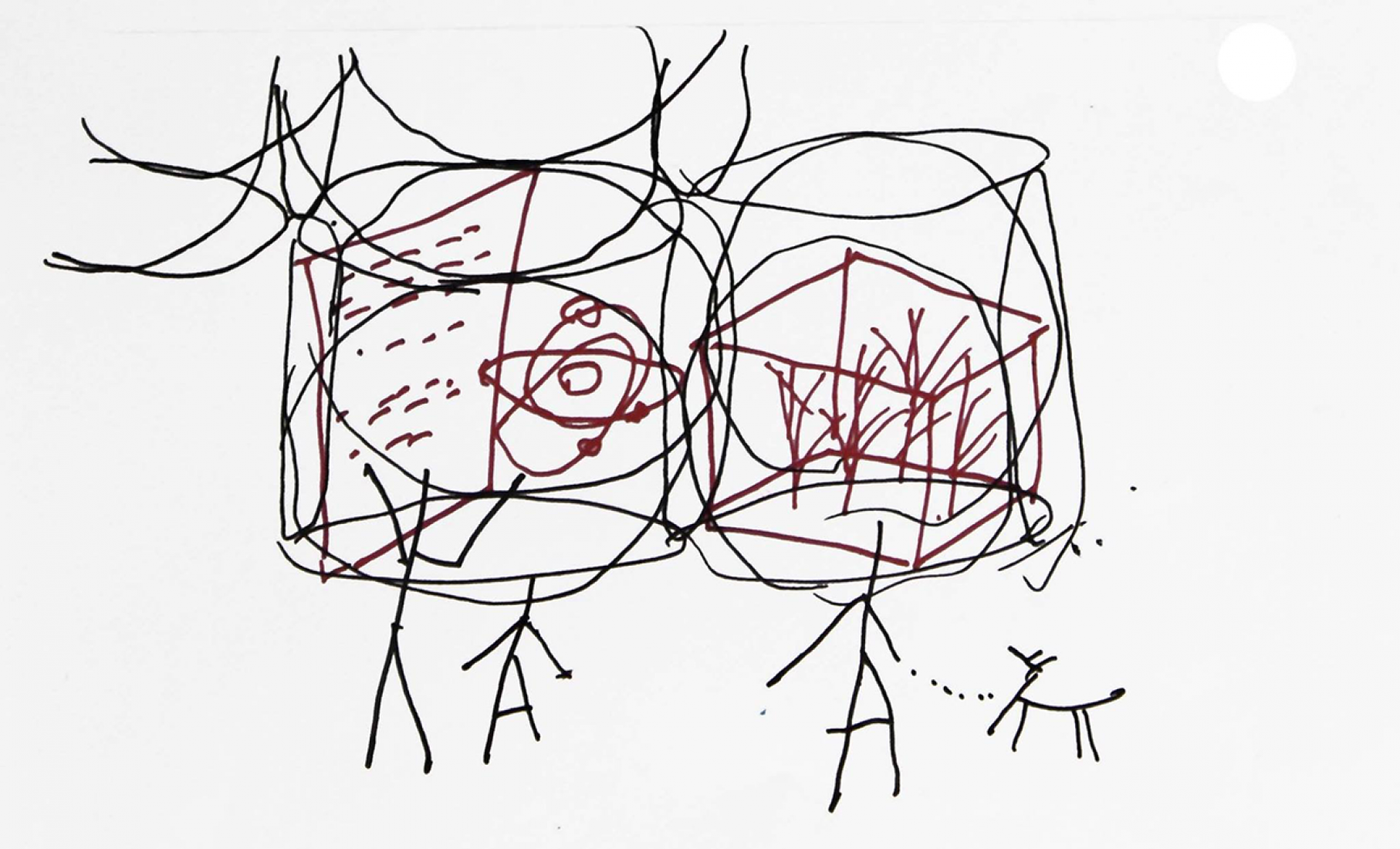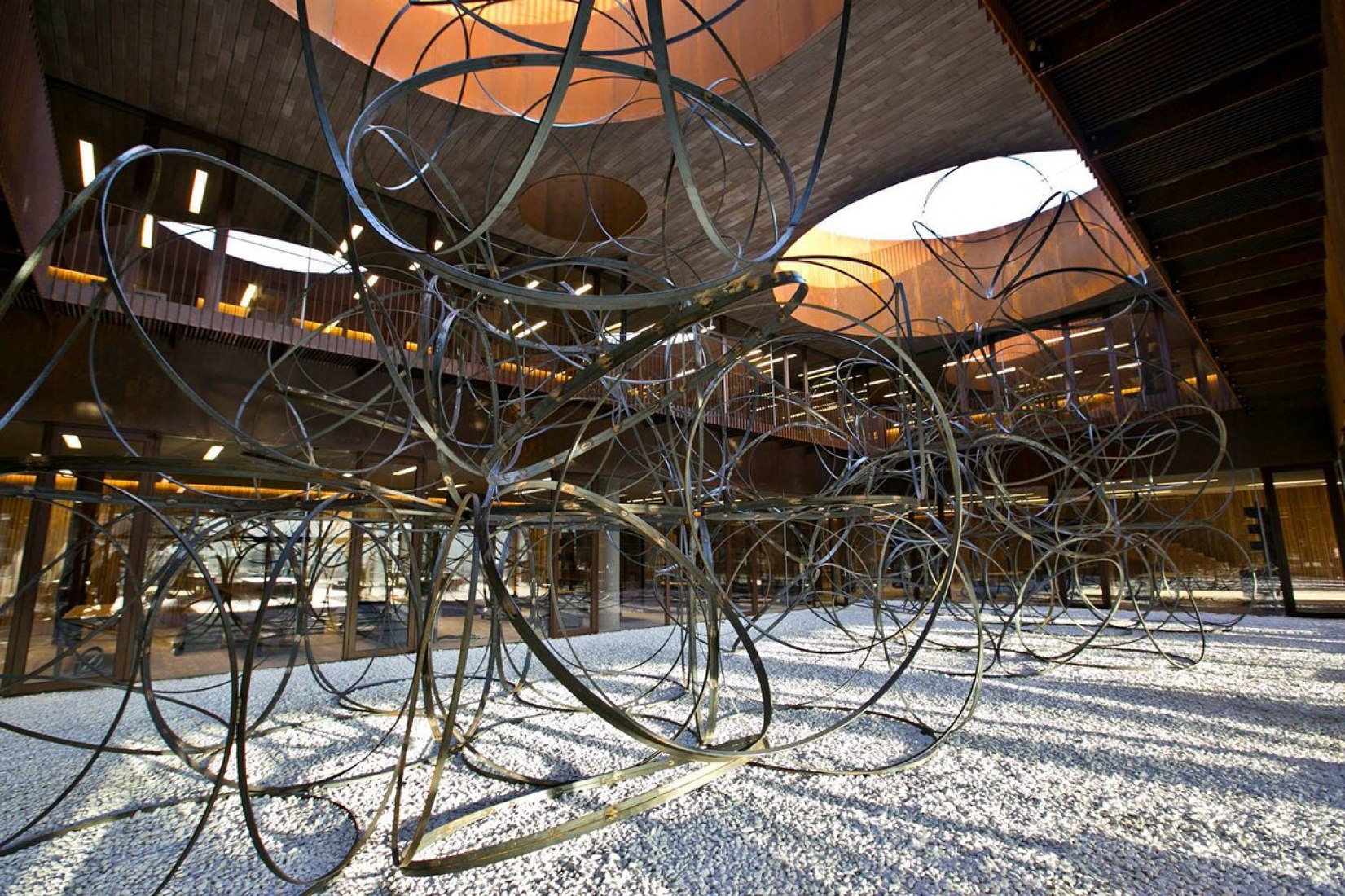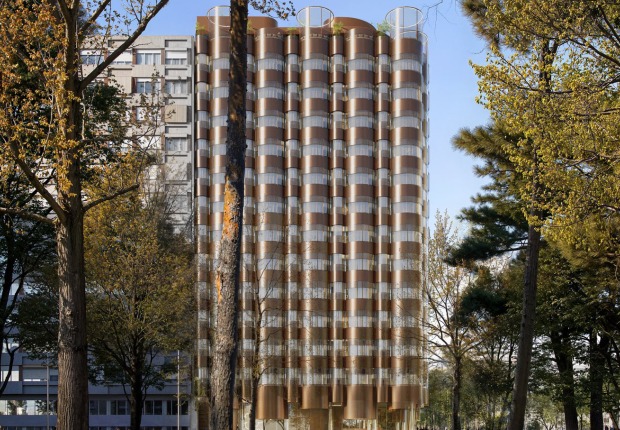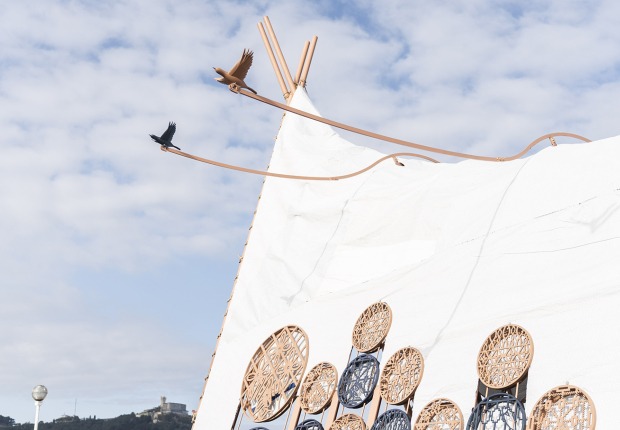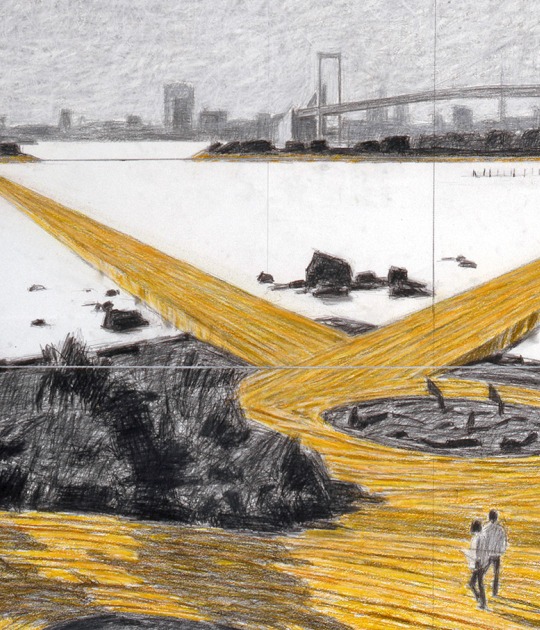La exposición se centra en el nuevo texto teórico, La Dilution de L'architecture de Yona Friedman. Este texto reciente se presenta en forma gráfica, siendo por tanto fácil de leer y de mostrar en una exposición. En particular, La Dilution de l'Architecture invita al individuo a pensar y actuar por sí mismo en cada una de las situaciones de la vida cívica, incluyendo el diseño de los espacios en donde se mueve. Propone la arquitectura y el urbanismo como marcos para la vida y creatividad humana que deben estar siempre supeditados a las necesidades del individuo o sociedad y no al contrario.
.../...la arquitectura puede significar algo más que edificios y la organización de exposiciones no es necesariamente competencia de la “arquitectura”. Los museos pueden ser uno de los mejores ejemplos de “arquitectura sin edificios”. Yona Friedman.
Yona Friedman es un arquitecto húngaro-francés, nacido en Budapest (Hungría) en 1923, su obra es una de las más visionarias desde la segunda mitad del siglo XX hasta hoy, y sus ideas han inspirado a urbanistas, arquitectos, diseñadores y sociólogos de todo el mundo.
El proyecto de esta exposición está concebido como un proceso continuo, el "work in progress” de una arquitectura en movimiento, capaz de cambiar durante su proceso y durante el tiempo. En la exposición vamos a presentar un nuevo texto teórico de Yona Friedman, que en esta exposición es presentado de forma gráfica: La Dilution de l'Architecture. Se quiere poner en relación este nuevo manifiesto con el mundo de la arquitectura y del arte contemporáneo, explicando sus diferentes conceptos.
Se expondrán una serie de proyectos que reflejan la teoría del manifiesto; los proyectos arquitectónicos de Yona Friedman en colaboración con Emmanuele Lo Giudice; vídeo-entrevistas, dibujos, textos y fotos, realizadas expresamente por arquitectos y artistas relevantes, en torno al tema de la exposición, marcando la actualidad y relevancia de los conceptos propuestos por Friedman a través de otros creadores como: Federico Soriano, Pier Vittorio Aureli, Giancarlo Mazzanti, Andrés Jaque, Franco Purini, Juan Miguel Hernández León, Emmanuele Lo Giudice, Sergio Polano, Manuel Orazi, Juan Herreros, Javier Seguí de la Riva, José Juan Barba, Carlos Garaicoa, Tomás Saraceno, Marc Vincent Kalinka y el poeta italiano Valentino Zeichen. Se proyectará también una vídeo-entrevista inédita entre Yona Friedman y Hans-Ulrich Obrist.
Se van a realizar, exclusivamente para esta exposición, dos sillas y una estantería, (los primeros objetos de diseño de Yona Friedman); un museo temporal por las calles de Madrid, Madrid Street Museum 2014, en colaboración con el curso de Efimeras de la Universidad de Arquitectura de Madrid y uno de sus famosos Iconostase (Space Chain) en colaboración con el Instituto Europeo de Design de Madrid.
Durante la exposición se realizarán algunos eventos colaterales: performance de música y danza sobre el universo africano de Friedman y sobre la relación entre el cuerpo y la arquitectura.
PROGRAMACIÓN DE LA EXPOSICIÓN
Viernes 21 de Feb.
Inauguración.- a las 19.30horas.
Lugar.- Salón de Actos. COAM. LASEDE, C/Hortaleza 63, Madrid.
Conferencia: José Juan Barba (director de Metalocus): About Yona Friedman.
Emmanuele Lo Giudice: Los museos de Yona Friedman.
Performance de Jennifer Cabrera Fernández: El mundo africano.
Proyección de un fascinante film de animación de Yona Friedman y Denise Charvein, premiado con Il Leone de la Biennale de Venecia en 1962.
Jueves 27 de Feb.
Performance de Jennifer Cabrera Fernández: El mundo africano.
Lugar.- COAM; LASEDE, C/Hortaleza 63, Planta de Acceso, BANDEJA 1.
Viernes 28 de Feb.
Realización del proyecto.- Madrid Street Museum 2014.
Lugar.- ETSAM. Av. Juan de Herrera, s/n. 18,30 h.
Performance de Jennifer Cabrera Fernández: Arquitectura en Movimiento.
Lugar.- ETSAM. Av. Juan de Herrera, s/n. 18,30 h.
Lunes 10 de Marzo.
Proyección del documental: Yona Friedman.
Lugar.- LASEDE COAM, C/Hortaleza 63, Planta de Acceso.
Comisario y organización de la exposición: Emmanuele Lo Giudice.
Co- comisario: Beriot, Bernardini arquitectos.
Lugar.- COAM; LASEDE, C/Hortaleza 63, Planta de Acceso, BANDEJA 1.
Fechas.- Del 21 de febrero al 13 de marzo de 2014. De lunes a viernes - 09:00 a 20:00h (Sábado 22 y domingo 23 de febrero).

